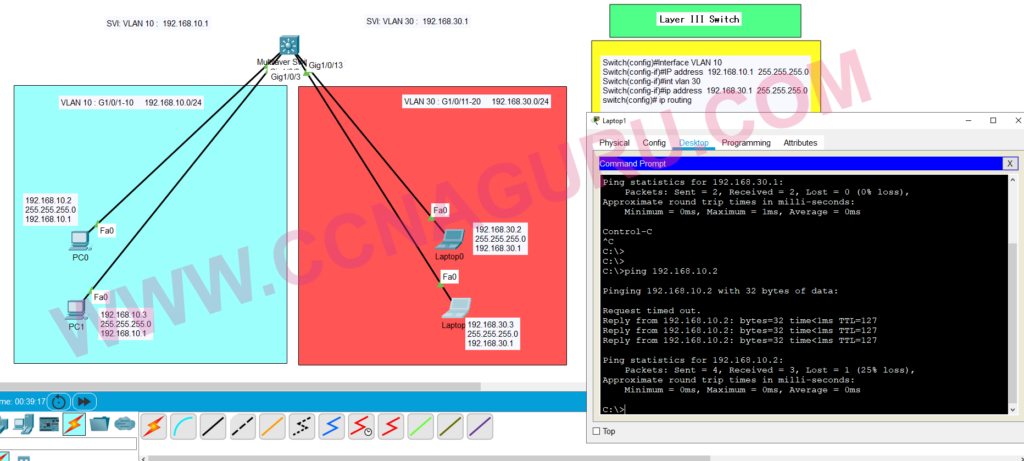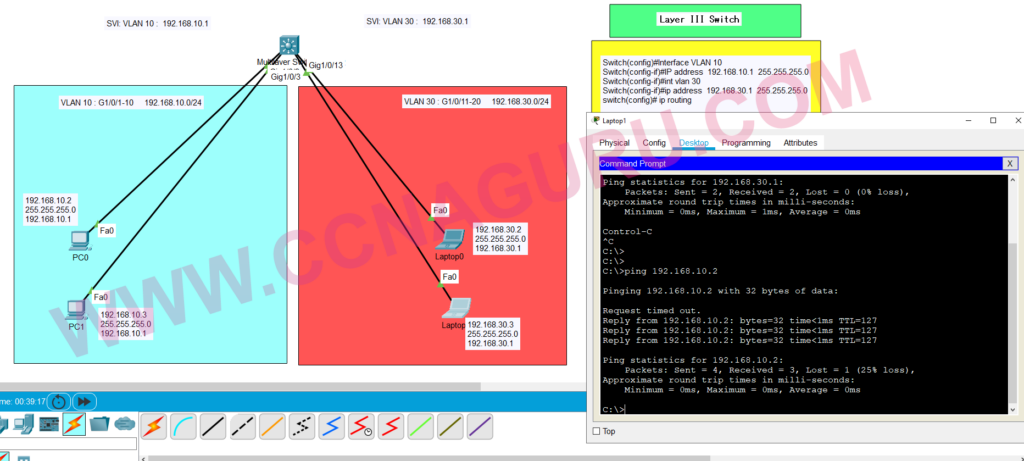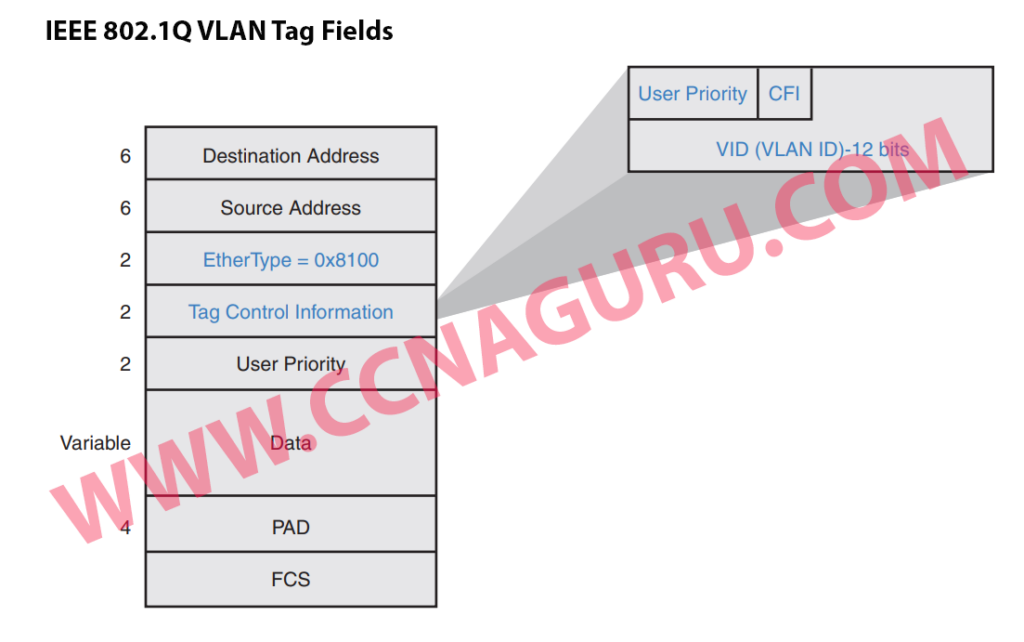Objective:
To understand how to work with inter-VLAN routing using Layer 3 switch SVI (Switched Virtual Interface) interface.
Steps to Configure Inter-VLAN Routing:
1. Configure VLANs:
Start by creating the VLANs you want to use for inter-VLAN routing. Assign unique VLAN IDs and assign the required interfaces to their respective VLANs.
2. Enable IP routing:
Enable IP routing on the Layer 3 switch. This allows the switch to route traffic between VLANs.
3. Configure SVI interfaces:
Create SVI interfaces for each VLAN that requires inter-VLAN routing. An SVI acts as a virtual interface representing a VLAN on the Layer 3 switch. Assign an IP address to each SVI interface within the corresponding VLAN subnet.
4. Enable SVI interfaces:
Enable each SVI interface to bring it up and allow it to participate in inter-VLAN routing.
5. Configure default gateway:
Specify the default gateway IP address on the Layer 3 switch. This is typically the IP address of the router that connects the switch to other networks.
6. Add static routes:
If there are additional networks beyond the connected VLANs, add static routes on the Layer 3 switch to ensure proper routing between those networks and the VLANs.
Example:
Let’s assume we have a Layer 3 switch with two VLANs, VLAN 10 and VLAN 20. We want to enable inter-VLAN routing between these VLANs using SVI interfaces.
1. Configure VLANs:
VLAN 10: Assign interfaces Fa0/1, Fa0/2 to VLAN 10.
VLAN 20: Assign interfaces Fa0/3, Fa0/4 to VLAN 20.2. Enable IP routing:
Enable IP routing on the Layer 3 switch.3. Configure SVI interfaces:
VLAN 10 SVI: Configure interface VLAN 10 with IP address 192.168.10.1/24.
VLAN 20 SVI: Configure interface VLAN 20 with IP address 192.168.20.1/24.4. Enable SVI interfaces:
Activate VLAN 10 SVI and VLAN 20 SVI.5. Configure default gateway:
Set the default gateway IP address to the IP address of the connected router
(e.g., 192.168.1.1).6. Add static routes:
If there are additional networks beyond VLANs 10 and 20, add static routes to those
networks via the Layer 3 switch.With this configuration, devices connected to VLAN 10 can communicate with devices in VLAN 20 by using the SVI interfaces as the gateway. For example, a device with IP address 192.168.10.10 in VLAN 10 can communicate with a device with IP address 192.168.20.20 in VLAN 20 by sending traffic to their respective SVI IP addresses.
By following these steps and configuring the necessary settings, you can achieve inter-VLAN routing using Layer 3 switch SVI interfaces.

InterVLAN Routing Using Layer III Switch with SVI









